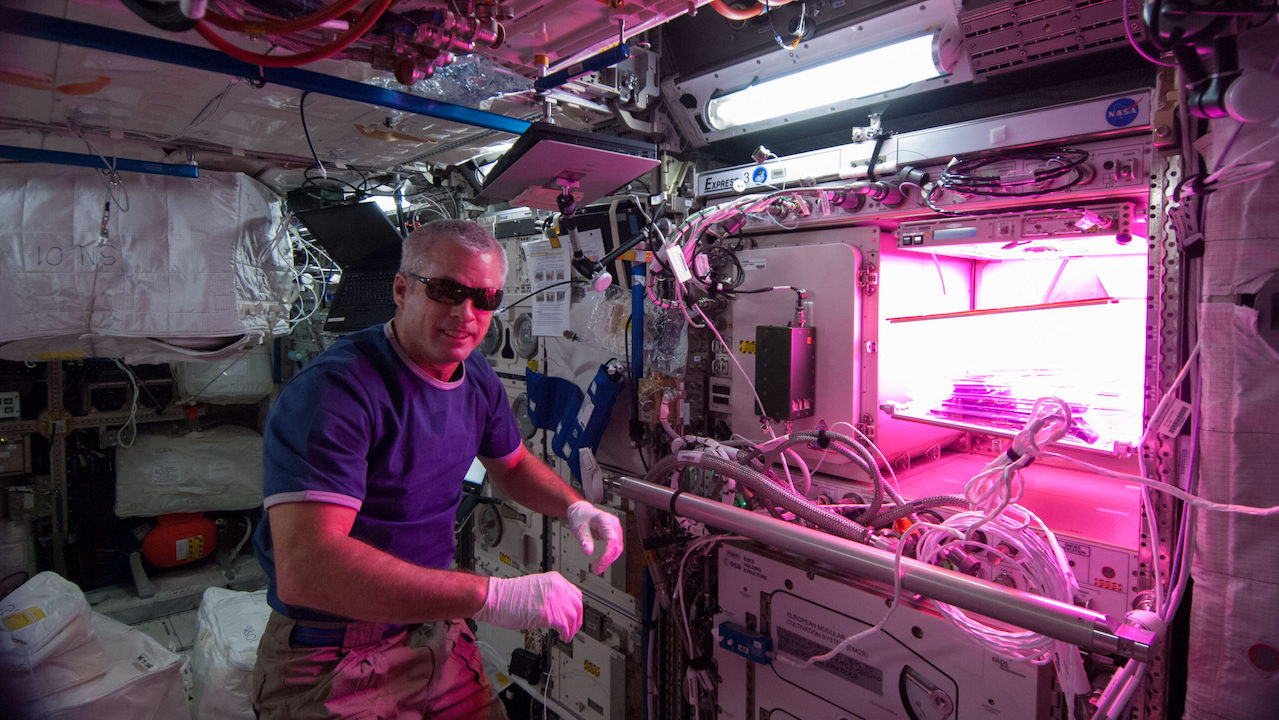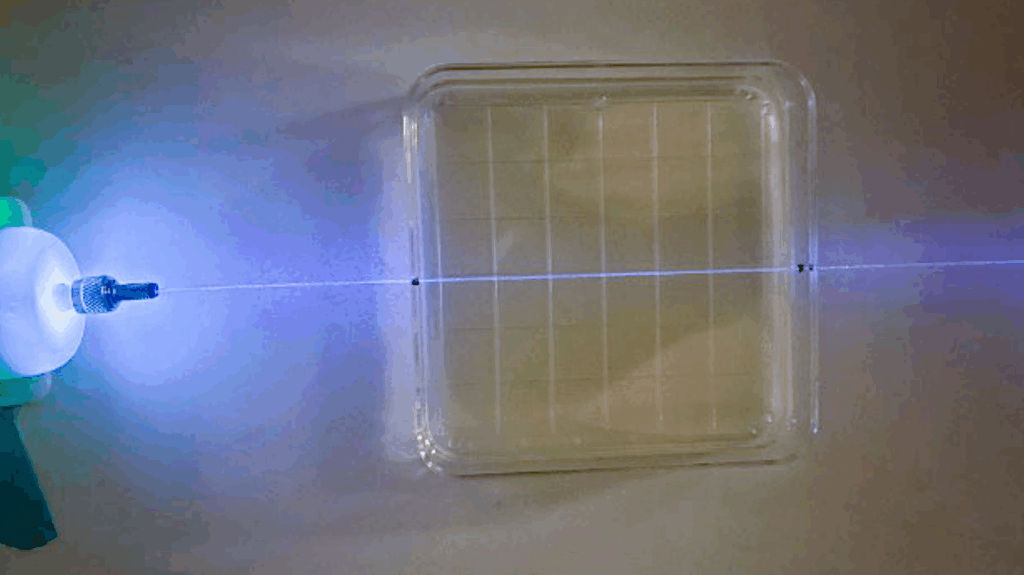NASA Spaceline Current Awareness List #1,089 1 March 20242 (Space Life Science Research Results)

Space Life Science Research Aboard The International Space Station
The abstract in PubMed or at the publisher’s site is linked when available and will open in a new window.
Papers deriving from NASA support:
- Antonsen E, Reynolds RJ, Charvat J, Connell E, Monti A, Petersen D, Nartey N, Anton W, Abukmail A, Marotta K, Van Baalen M, Buckland DM.Causal diagramming for assessing human system risk in spaceflight.npj Microgravity. 2024 Mar 19;10(1):32. Review.Note: This article may be obtained online without charge.
Journal Impact Factor: 5.1
Funding: “E.A. was supported by a Translational Research Institute for Space Health grant number NASA NNX16AO69A.” - Griko Y LD, Stolc V.Metabolic suppression: A promising solution to unlock the future of space travel.Journal of Tourism & Hospitality. 2024 Jan 18;12(6):537.Note: This article is a mini review and may be obtained online without charge.
Journal Impact Factor: 16.7
Funding: “Funding by NASA Space Biology Program and NASA Human Research Program.” - Ward J, Reynolds RJ, Connell E, Anton W, Kabeel A, Charvat JM, Nartey N, Marotta K, Abukmail A, Buckland DM, Van Baalen M, Antonsen E.Levels of evidence for human system risk evaluation.npj Microgravity. 2024 Mar 20;10(1):33. Review.Note: This article may be obtained online without charge.
Journal Impact Factor: 5.1
Funding: “E.A. is supported by a Translational Research Institute for Space Health grant number NASA NNX16AO69A.” - Chen IA.RNA life on the edge of catastrophe.Proc Natl Acad Sci USA. 2024 Mar 26;121(13):e2402649121.Note: This article is a comment and may be obtained online without charge.
Journal Impact Factor: 11.1
Funding: “The author’s research is supported by NASA (80NSSC21K0595), the Simons Foundation (290356FY18), the Sloan (AWD103574) and Moore (AWD103653) Foundations, NSF (2318736), and NIH (R35GM148249).” - Urbaniak C, Tesei D, Van Houdt R.Editorial: The impact of the space environment on microbial growth and behavior.Front Microbiol. 2024 Mar 21;15:1390100.Note: This article is an editorial and is part of Research Topic “The Impact of the Space Environment on Microbial Growth and Behavior” (https://www.frontiersin.org/research-topics/27130/the-impact-of-the-space-environment-on-microbial-growth-and-behavior#overview). The Research Topic also includes articles from previous Current Awareness Lists #1,009 https://doi.org/10.3389/fmicb.2022.877625, https://doi.org/10.3389/fmicb.2022.893071, and https://doi.org/10.3389/fmicb.2022.909997; #1,041 https://doi.org/10.3389/fmicb.2023.1090740; #1,046 https://doi.org/10.3389/fmicb.2023.1155726; #1,050 https://doi.org/10.3389/fmicb.2023.1150224; and #1,069 https://doi.org/10.3389/fmicb.2023.1176582. This article may be obtained online without charge.
Journal Impact Factor: 5.2
Funding: C. Urbaniak is affiliated with NASA Jet Propulsion Laboratory. - Ridgway WB, Picano JJ, Morgan CA, 3rd, Roland RR, Rabinowitz YG.Unmasking verbal defensiveness: The role of psychological threat in sentence completion tests.J Pers Assess. 2024 Mar 15;1-9. Online ahead of print.Note: From the abstract: “Shedding light on the validity of sentence completion test (SCT) verbal defensiveness as an index of defensive behavior, the current two-part study examined the relationship between psychological threat and verbal defensiveness among military security and mission-critical team candidates using SCTs.” This article may be obtained online without charge.
Journal Impact Factor: 3.4
Funding: J.J. Picano is affiliated NASA Johnson Space Center. - Lucas RJ, Allen AE, Brainard GC, Brown TM, Dauchy RT, Didikoglu A, Do MTH, Gaskill BN, Hattar S, Hawkins P, Hut RA, McDowell RJ, Nelson RJ, Prins JB, Schmidt TM, Takahashi JS, Verma V, Voikar V, Wells S, Peirson SN.Recommendations for measuring and standardizing light for laboratory mammals to improve welfare and reproducibility in animal research.PLoS Biol. 2024 Mar 12;22(3):e3002535.Journal Impact Factor: Not available for this journal
Funding: “The workshop was supported by awards from UFAW (11-22/23), the Committee International de l-Eclairage, NASA Ames Research Center, and the University of Manchester.”
Other papers of interest:
- Kimura Y, Nakai Y, Ino Y, Akiyama T, Moriyama K, Ohira T, Saito T, Inaba Y, Kumagai K, Ryo A, Hirano H.Identification of gravity-responsive serum proteins in spaceflight mice using a quantitative proteomic approach with data-independent acquisition mass spectrometry.Proteomics. 2024 Mar 12;e2300214. Online ahead of print.Note: ISS results and hindlimb unloading study. This article may be obtained online without charge.
- van Oosterhout WPJ, Perenboom MJL, Terwindt GM, Ferrari MD, Vein AA.Frequency and clinical features of space headache experienced by astronauts during long-haul space flights.Neurology. 2024 Apr 9;102(7):e209224.Note: ISS results. This article may be obtained online without charge.
- Zhang Y, Du X, Zhao L, Sun Y.Construction of dose prediction model and identification of sensitive genes for space radiation based on single-sample networks under spaceflight conditions.Int J Radiat Biol. 2024 Mar 12;1-14. Online ahead of print.Note: From the abstract: “To identify sensitive genes for space radiation, we integrated the transcriptomic samples of spaceflight mice from GeneLab and predicted the radiation doses absorbed by individuals in space.”
- Zhang Y, Li Z, Peng Y, Guo Z, Wang H, Wei T, Shakir Y, Jiang G, Deng Y.Microbiome in a ground-based analog cabin of China Space Station during a 50-day human occupation.ISME Commun. 2024 Jan;4(1):ycae013.Note: This article may be obtained online without charge.
- Bubeev JA, Johannes B, Kotrovska TI, Schastlivtseva D, Bronnikov S, Hoermann H-J, Gaillard AWK.Free cognitive capacity assessed by the P300 method during manual docking training in space.Aerosp Med Hum Perform. 2024 Apr;95(4):187-93.Note: From the abstract: “The classical P300 brain potential method was used to assess the cognitive capacity during training of manual docking in space. The aim of the study was to enhance the safety of this operation during a mission.”
- Chhabrani A, Bettahalli Shivamallu A, Bharadwaj RS, Kale R, Kathuria A.Microgravity’s dental dilemma: Navigating oral health challenges in space, from effect on bone to therapeutic frontiers – A review.Acta Astronaut. 2024 Mar 19. Review. Online ahead of print.
- Hetzler MR, Fogarty JA, Frament C.Special operations and space medicine for a joint future.J Spec Oper Med. 2024 Mar 15. Online ahead of print.Note: From the abstract: “This paper is designed to introduce, propose, inform, and advocate enhanced relationships between the medical communities of special operations and space.”
- Klomchitcharoen S, Wechakarn P, Tangwattanasirikun T, Smerwong N, Netrapathompornkij P, Chatmeeboon T, Nangsue N, Thitasirivit V, Kaweewongsunthorn K, Piyanopharoj S, Phumiprathet P, Wongsawat Y.High-altitude balloon platform for studying the biological response of living organisms exposed to near-space environments.Heliyon. 2024 Mar 30;10(6):e27406.Note: This article may be obtained online without charge.
- Levschuk A, Whittal J, Trejos AL, Sirek A.Leveraging space-flown technologies to deliver healthcare with holographic physical examinations.Aerosp Med Hum Perform. 2024 Apr;95(4):214-8.Note: From the abstract: “Musculoskeletal injuries are one of the more common injuries in spaceflight. Physical assessment of an injury is essential for diagnosis and treatment. Unfortunately, when musculoskeletal injuries occur in space, the flight surgeon is limited to two-dimensional videoconferencing and, potentially, observations made by the crew medical officer. To address these limitations, we investigated the feasibility of performing physical examinations on a three-dimensional augmented reality projection using a mixed-reality headset, specifically evaluating a standard shoulder examination.”
- Fernandez-Gonzalo R, Deane CS, Bailey DM.Experimental bedrest as a model to investigate mechanisms of, and countermeasures against, microgravity and disease-free inactivity.Exp Physiol. 2024 Mar 13. Online ahead of print.Note: This article may be obtained online without charge.
- Jörges B, Bury N, McManus M, Bansal A, Allison RS, Jenkin M, Harris LR.The effects of long-term exposure to microgravity and body orientation relative to gravity on perceived traveled distance.npj Microgravity. 2024 Mar 13;10:28.Note: From the abstract: “Self-motion perception is a multi-sensory process that involves visual, vestibular, and other cues. When perception of self-motion is induced using only visual motion, vestibular cues indicate that the body remains stationary, which may bias an observer’s perception. When lowering the precision of the vestibular cue by for example, lying down or by adapting to microgravity, these biases may decrease, accompanied by a decrease in precision. To test this hypothesis, we used a move-to-target task in virtual reality.” This article may be obtained online without charge.
- Lehr FX, Pavletić B, Glatter T, Heimerl T, Moeller R, Niederholtmeyer H.Enhanced assembly of bacteriophage T7 produced in cell-free reactions under simulated microgravity.npj Microgravity. 2024 Mar 15;10:30.Note: A 2D clinostat was used in this study. This article is a brief communication and may be obtained online without charge.
- Nordberg RC, Bodle JC, Loboa EG.Mechanical stimulation of adipose-derived stromal/stem cells for functional tissue engineering of the musculoskeletal system via cyclic hydrostatic pressure, simulated microgravity, and cyclic tensile strain.Methods Mol Biol. 2024 Mar 14;2783:349-65.
- Yemets A, Shadrina R, Blume R, Plokhovska S, Blume Y.Autophagy formation, microtubule disorientation, and alteration of ATG8 and tubulin gene expression under simulated microgravity in Arabidopsis thaliana.npj Microgravity. 2024 Mar 18;10:31.Note: A clinostat was used in this study. This article may be obtained online without charge.
- Sauvet F, Beauchamps V, Cabon P.Sleep inertia in aviation.Aerosp Med Hum Perform. 2024 Apr;95(4):206-13.Note: From the abstract: “Sleep inertia is the transition state during which alertness and cognitive performance are temporarily impaired after awakening. Magnitude and time course of sleep inertia are characterized by high individual variability with large differences between the cognitive functions affected. This period of impairment is of concern to pilots, who take sleep or nap periods during on-call work hours or in-flight rest, then need to perform safety-critical tasks soon after waking. This review analyzes literature related to sleep inertia and countermeasures applicable for aviation.”
- Totou S, Karmiris E, Kanakis M, Gartaganis P, Petrou P, Kalogeropoulos C, Kozobolis V, Stavrakas P.Impact of flight and equivalent short-term high-altitude exposure on ocular structures and function.Med Hypothesis Discov Innov Ophthalmol. 2023 Dec 31;12(3):127-41. Review.Note: This article may be obtained online without charge.
- D’Alessandro M, Mackie R, Wolf S, McGhee JS, Curry I.Physiological fitness of U.S. Army aviators compared to the U.S. general population.Aerosp Med Hum Perform. 2024 Apr;95(4):175-86.
- Ducommun S, Jannig PR, Cervenka I, Murgia M, Mittenbühler MJ, Chernogubova E, Dias JM, Jude B, Correia JC, Van Vranken JG, Ocana-Santero G, Porsmyr-Palmertz M, McCann Haworth S, Martínez-Redondo V, Liu Z, Carlström M, Mann M, Lanner JT, Teixeira AI, Maegdefessel L, Spiegelman BM, Ruas JL.Mustn1 is a smooth muscle cell-secreted microprotein that modulates skeletal muscle extracellular matrix composition.Mol Metab. 2024 Mar 6;82:101912.Note: Hindlimb unloading study.
- Archer SN, Möller-Levet C, Bonmatí-Carrión M, Laing EE, Dijk DJ.Extensive dynamic changes in the human transcriptome and its circadian organization during prolonged bedrest.iScience. 2024 Mar 15;27(3):109331.Note: This article may be obtained online without charge.
- Miller KC, Amaria NY.Body bag cooling with two different water temperatures for the treatment of hyperthermia.Aerosp Med Hum Perform. 2024 Apr;95(4):194-9.
- Zhang H, Zhou Z, Guo J.The function, regulation, and mechanism of protein turnover in circadian systems in Neurospora and other species.Int J Mol Sci. 2024 Feb 22;25(5):2574. Review.Note: This article is part of Special Issue “Protein Stability Research” (https://www.mdpi.com/journal/ijms/special_issues/7W5760N452) and may be obtained online without charge.
astrobiology, space biology, space medicine,








